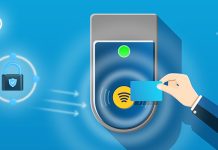RFID golf balls are a relative innovation in the world of golf. These balls are equipped with a Radio Frequency Identification (RFID) chip to communicate with RFID readers on the course. In the case of golf balls, RFID technology allows for precise tracking of each ball as it travels through the course. This information can be used to improve course management and player performance, making the game more enjoyable and efficient for everyone.
What are RFID Golf Balls?
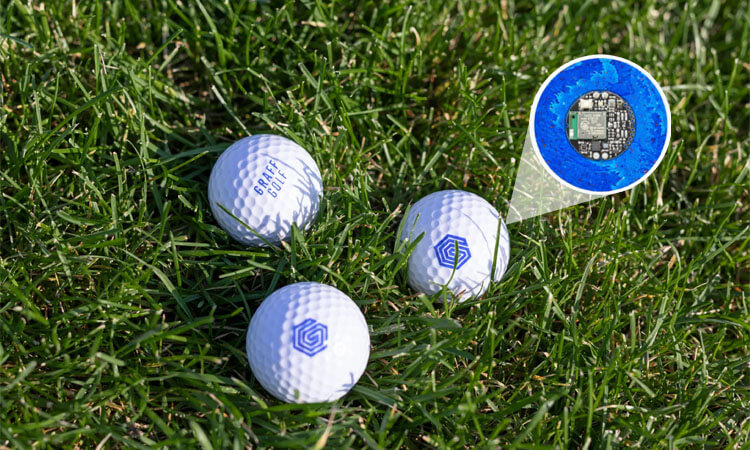
RFID Golf Balls are regular golf balls fitted with a small RFID chip. These chips are typically embedded in the ball’s core or attached to the surface using a special adhesive. The chips are activated by radio waves, which a receiver can transmit on the course / by a device carried by the player. The chip sends a signal to the receiver when the ball is hit. This signal mainly provides information about the position and trajectory of the ball.
RFID golf balls aim to provide golfers with more accurate and detailed information about their shots. It can help them improve their game and make more informed decisions on the course. Some golf balls with RFID chips are also designed to be more durable or to have other special features, such as increased distance or a softer feel.
How Do RFID Golf Balls Work?
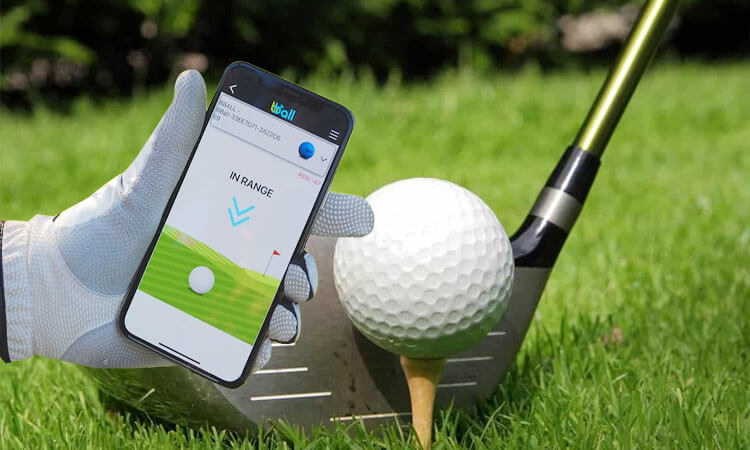
RFID Golf Balls work by using radio frequency technology to transmit and receive data. The chip within the ball begins to transmit data to RFID readers on the course when a golfer hits an RFID golf ball. These readers can be placed at various points throughout the course, such as at the tee box, green, and fairway. The data transmitted by the ball includes its location, distance, and trajectory, among other information. The golfer can access this data via a smartphone app or other device. They can display it in real-time for the player or course manager.
Benefits of RFID Golf Balls

Radio-frequency identification technology is used in various applications, including golf balls. RFID golf balls contain a small RFID chip that can be read by an RFID reader or a device with RFID technology. There are several key benefits to using RFID tags for golf balls:
- Enhanced accuracy: RFID technology in golf balls can help players track their shots more accurately, as the RFID chip can provide information on the ball’s distance, trajectory, and speed. This can be useful for analyzing one’s golf game and identifying areas for improvement.
- Improved pace of play: RFID technology in golf balls can help speed up play on the course, as players no longer have to manually mark their balls or measure shot distances.
- Enhanced security: RFID technology in golf balls can be tracked and identified more easily than traditional golf balls, which can help prevent theft and ensure that players use the correct ball.
- Greater convenience: RFID technology in golf balls can be easily located on the course, making it easier to find and retrieve a ball after a shot.
It is worth noting that RFID technology in golf balls are generally more expensive than traditional golf balls, and some players may prefer the feel and performance of traditional golf balls.
Course Management with RFID Golf Balls
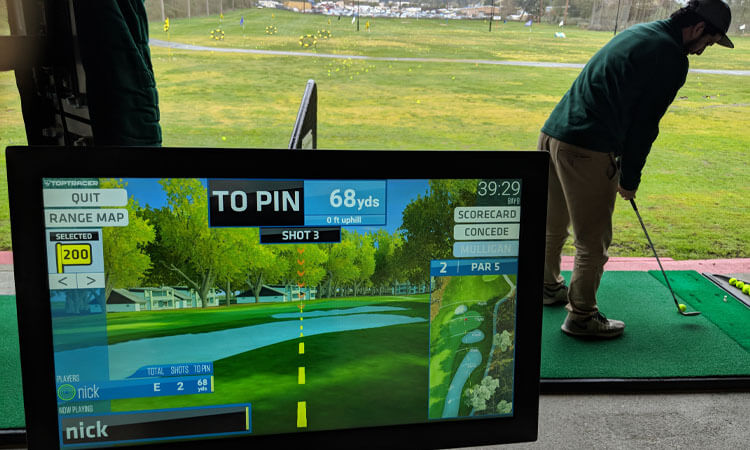
In addition to improving player performance, RFID Golf Balls can also improve course management. With the ability to track each ball’s location and movement, course managers can more easily monitor the course and make sure that it is being maintained to the highest standards. This can include identifying areas of the course that are prone to wear and tear and identifying and addressing any hazards or other issues that may arise.
Drawbacks of RFID Golf Balls

While there are many benefits to using RFID golf balls, there are also a few potential drawbacks.
- Cost: Golf balls with RFID chips are generally more expensive than traditional golf balls, which may be a factor for some players.
- Performance: Some players may prefer the feel and performance of traditional golf balls, and may not be satisfied with the performance of Golf balls with RFID chips.
- Dependence on technology: Golf balls with RFID chips require an RFID reader or a device with RFID technology to provide enhanced tracking and accuracy benefits. If this technology is unavailable or functioning properly, you may not fully realize the benefits of RFID golf balls.
- Battery life: Golf balls with RFID chips may require a battery to power the RFID chip, which may need to be replaced periodically.
- Durability: The RFID chip in an RFID golf ball may be more prone to damage or failure than a traditional golf ball, which could affect the ball’s performance.
It is worth noting that the potential drawbacks of Golf balls with RFID chips may vary depending on the specific product and how it is used. As with any golf equipment, it is important to carefully consider the benefits and drawbacks of Golf balls with RFID chips before making a purchase.
RFID Golf Ball Technology in the Future
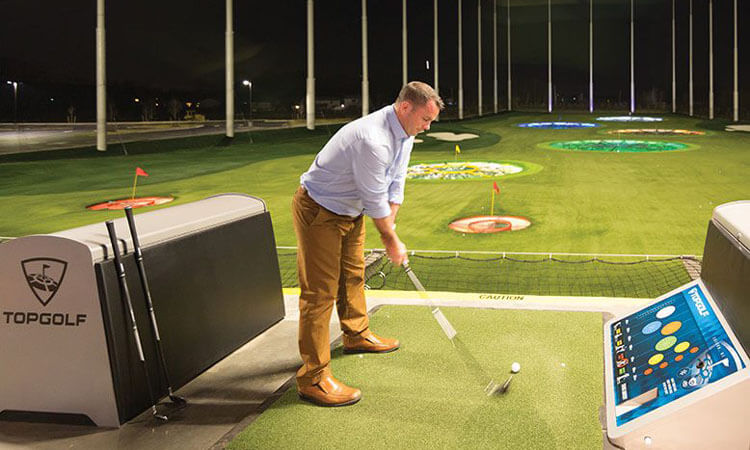
As RFID technology advances, we will likely see further developments in the world of RFID golf balls. One potential area of growth is using RFID technology to enhance the golfing experience. For example, RFID technology could provide golfers with real-time course information, such as weather conditions, hazards, etc. You could also use RFID chip golf balls to provide golfers personalized experiences, such as tailored coaching and training programs.
RFID Golf Balls vs. GPS Golf Ball

RFID golf balls and GPS (Global Positioning System) golf balls are designed to help golfers track their shots and improve their game. However, they use different technologies to accomplish this.
RFID chip golf balls are equipped with a small chip that contains information about the ball, such as its make and model. An RFID reader can read this chip, typically a handheld device the golfer carries. You can use the RFID reader to track the distance and location of the ball, as well as other data such as shot speed and spin rate. Some RFID chip golf balls also have sensors that can measure and transmit data about the ball’s flight characteristics.
On the other hand, GPS golf balls use satellite technology to determine their location on the course. They are equipped with a GPS receiver that can communicate with satellites orbiting the earth to determine their location within a few meters. Some GPS golf balls also have sensors to measure and transmit data about the ball’s flight characteristics.
Both RFID and GPS golf balls can be useful tools for golfers looking to improve their game and track their shots. However, RFID golf balls may be more accurate at tracking the ball’s location, while GPS golf balls may be more convenient because they do not require a separate device to read the data.
Here’s a table outlining the main differences between RFID golf balls and GPS golf balls:
| RFID Golf Balls | GPS Golf Balls | |
|---|---|---|
| Definition | Golf balls embedded with radio frequency identification (RFID) technology. | Golf balls equipped with GPS technology that provides distance and location information. |
| Function | Allow for accurate tracking and management of golf balls on the course. | Provide distance and location information to the golfer. |
| Accuracy | Provides precise tracking of individual shots and ball movement. | Provides accurate distance information to the golfer. |
| Cost | Typically more expensive due to the added cost of RFID technology. | Generally less expensive than RFID golf balls. |
| Battery Life | Battery life can vary depending on usage and type of RFID technology used. | Battery life can vary depending on usage and type of GPS technology used. |
| Data Storage | Can store data on individual shots and ball movement for later analysis. | Generally does not store data beyond the current round of golf. |
| Range | Requires a reader or scanner to detect RFID signals. | Does not require a reader or scanner, but may be affected by terrain or obstacles. |
| Applications | Used for tracking and management of golf balls on the course. | Used for providing distance and location information to the golfer. |
Related Articles: RTLS vs RFID: The Difference Between RFID and RTLS Tracking
Are RFID Golf Balls Right for Me?
RFID golf balls are designed to be used with RFID-enabled golf club tracking systems, which can provide detailed information about the performance of a golfer’s shots. These systems track the distance and accuracy of each shot. They can also track the speed and rotation of the ball. Some RFID golf balls also have other features, such as a durable cover or a lower compression design, which can affect the feel and performance of the ball.
Whether RFID golf balls are right for you will depend on your goals and preferences as a golfer. If you are interested in collecting detailed data about your shots and using it to improve your game, an RFID golf ball and club tracking system may be useful. However, if you prefer a more traditional approach to golf or do not have an interest in tracking your shots, RFID golf balls may not be the best choice for you.
RFID golf balls are a promising innovation in golf that offers golfers a range of benefits. While there are a few potential drawbacks to consider, such as cost and reliability, the benefits of enhanced accuracy and improved tracking may outweigh these concerns for many golfers. As RFID technology continues to evolve, it is likely that we will see further developments in the world of RFID golf balls, providing golfers with even more advanced and personalized experiences on the course.
More Questions About RFID Golf Balls
-
What are RFID golf balls, and how do they work?
RFID golf balls are embedded with radio frequency identification (RFID) technology. The RFID chip inside the ball emits a signal that a reader or scanner can detect.
-
How are RFID chip golf balls used in golf course management and operations?
RFID chip golf balls can be used to track the movement of golfers and golf balls on the course, monitor the pace of play, and manage the inventory of golf balls and other equipment.
-
What is the cost of using RFID chip golf balls, and how does it compare to traditional golf balls?
RFID chip golf balls are typically more expensive than traditional golf balls due to the added cost of the RFID technology. However, the benefits of improved tracking and management may offset the cost.
-
How do RFID golf balls impact the game for players and spectators?
RFID golf balls can enhance the player experience by providing more accurate ball tracking and faster play. Spectators can also benefit from improved visibility of the game and easier tracking of individual shots.
-
How do RFID golf balls affect the environment, and are they eco-friendly?
RFID golf balls may impact the environment due to the use of electronic components and batteries. However, the impact is likely small, and efforts are being made to develop more eco-friendly RFID technology.
-
Can RFID golf balls be used for training or coaching purposes, and how effective are they?
RFID golf balls can be used for training or coaching to provide more accurate shot tracking and analysis. The effectiveness of RFID golf balls for training may depend on the specific application and user.
-
How do RFID golf balls compare to other golf ball tracking technology types, such as GPS and laser rangefinders?
RFID golf balls offer a different tracking technology than GPS and laser rangefinders. While GPS and laser rangefinders provide distance information, RFID golf balls provide more accurate tracking of individual shots and ball movement.


